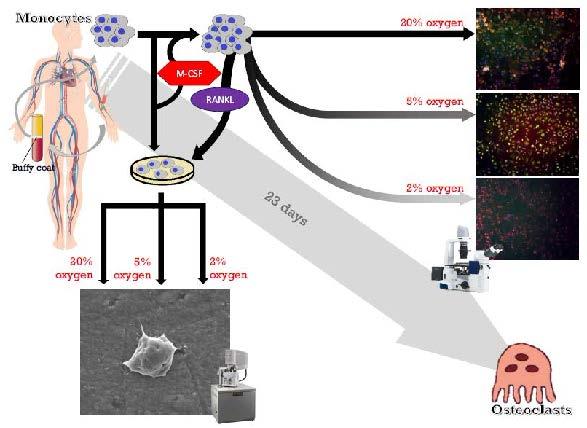
Osteoclasts resorb bone, where osteoblasts form bone and osteocytes regulate both processes. There has to be a balance between bone formation and bone resorption. In some cases, however, the balance is lost, which causes metabolic bone disorders, such as osteopetrosis, which is a inheritable metabolic bone disorder that results in bones with high density. This is usually caused by failing osteoclast formation or function, but can also have problems in bone formation or signaling. Finding a way to stimulate the differentiation and activity of osteoclasts could help in alleviating the symptoms of osteopetrosis. In hypoxic conditions, murine and feline cells increase in differentiation and resorptive activity. In a 2D cell culture has been examined whether this is the case with human monocytes differentiating towards osteoclasts. In 23 days of cell culture in hyperoxic, physiologic, and hypoxic conditions in osteoclast differentiation medium in plastic wells for a differentiation assay and on dentin disks for an activity assay, the cells are evaluated on 7 time points between day 2 and 23. With immunofluorescence, the optimum for differentiation of monocytes to osteoclasts is discovered, which is after 16 days of culture in hyperoxic conditions. In light microscopy, the number of cells and their size are found to be optimal on day 16 in hyperoxic conditions as well. With Scanning Electron Microscopy no cells, nor resorption pits were found on the dentin disks. Culturing monocytes for 16 days in hyperoxic condition will give the most and the largest osteoclasts with TRAP expression, more than three nuclei, and an actin ring.